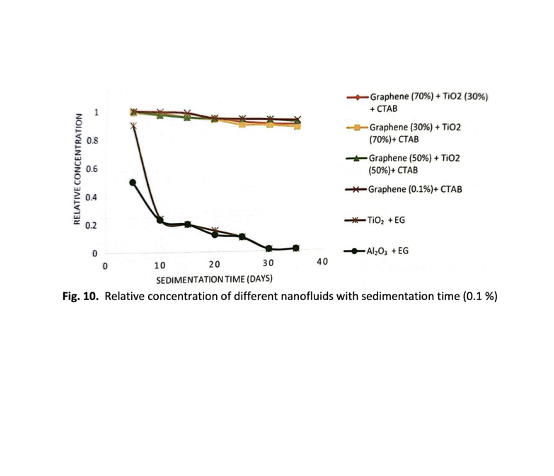Thermal Performance of Nanofluid in Automobile Radiator
DOI:
https://doi.org/10.37934/ard.107.1.115Keywords:
Thermal performance, nanofluid, radiator performance, automobile reactorAbstract
The use of nanofluids as a coolant in automobile radiators is getting more attention for the radiator’s better performance. Continuous development in automotive industries has increased the demand for higher efficiency car engines. The addition of a radiator fin is one way to improve the efficiency of car engines. However, this study aims to prepare stable nanofluid and analyze the thermal physical and thermal performance of the nanofluid. Stable nanofluids were prepared using the two-step method, and the sedimentation of nanofluid was recorded to evaluate the nanofluids' stability. Single material nanofluid was compared to hybrid nanofluid and the most stable nanofluid based on the nanoparticle's sedimentation was decided. Nanofluid with less sedimentation was concluded as the most stable nanofluid among the mixture. KD2 Pro measured the thermal conductivity of nanofluid after confirmation of the nanofluid stability. A nanoparticle and base fluid chosen were based on the previous study. Al2O3 and TiO2 were dispersed in ethylene glycol and graphene: TiO2 dispersed in the mixture of EG: Distilled water (48:32) have been proposed in this study to improve the radiator performance. The factors affecting the thermal conductivity were studied, and the effect of volume concentration on the thermal conductivity of a nanofluid to transfer heat was also highlighted. An increase in volume concentration would also increase the thermal conductivity of nanofluid and thus increase radiator performance. The equation correlation of volume concentration and weight percentage equation was also proposed and investigated, hence used to prepare the sample of nanofluid.
Downloads























